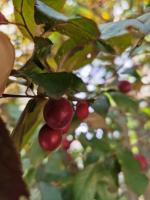Is the Photinia Tree a Recommended Plant?
The Photinia tree is a popular plant that is native to Asia. It is also known as the Chinese photinia or the Japanese photinia. The tree is well-loved by landscapers, gardeners, and homeowners because of its ornamental value. It has large shiny leaves that are green on the top and red underneath, giving it an attractive appearance. However, the question remains, is the Photinia tree a recommended plant?
Advantages of the Photinia Tree
The Photinia tree has numerous advantages that make it a recommended plant for many gardeners. Firstly, it is an evergreen plant that retains its leaves throughout the year, making it an excellent choice for hedges and screening. Secondly, it has a fast growth rate that enables it to establish quickly in a new site. Thirdly, the tree is easy to propagate from cuttings, which makes it accessible and affordable for many individuals. Lastly, the Photinia tree is disease and pest resistant, making it low maintenance and environmentally friendly.
Uses of the Photinia Tree
The Photinia tree has several uses that make it a versatile plant for landscapers and gardeners. The tree can be grown as a specimen plant, hedge, or screen. Its dense foliage and vibrant colors make it ideal for creating privacy or blocking unsightly views. Additionally, the Photinia tree can be used as an accent plant or a backdrop for other flowering plants. Finally, the tree's berries, which are red or black, can attract wildlife to the garden, such as birds and butterflies.
Care and Maintenance of the Photinia Tree
The Photinia tree is easy to care for and maintain, making it an ideal plant for homeowners who don't have much gardening experience. The tree prefers full sun to partial shade and well-drained soil. It can tolerate a range of soil types, as long as they are not waterlogged. Additionally, the Photinia tree requires regular watering, especially during the first few years of growth. Lastly, the plant should be pruned regularly to maintain its shape and size.
Drawbacks of the Photinia Tree
Despite its many benefits, there are some drawbacks to growing the Photinia tree that may make it unsuitable for some individuals. Firstly, the tree is susceptible to fungal diseases, such as leaf spot and fire blight, which can cause defoliation and weaken the tree. Secondly, the tree can grow to a considerable height, up to 20 feet, which may make it difficult to maintain or restrict its growth. Lastly, the Photinia tree can be invasive and compete with native species, particularly in areas where it is not a naturalized plant.
Conclusion
In conclusion, the Photinia tree is a recommended plant that has numerous benefits for landscapers and gardeners. Its ornamental value, fast growth rate, disease and pest resistance, and versatility make it an ideal plant for creating privacy or adding color to the garden. However, it is essential to consider its drawbacks, such as susceptibility to fungal diseases, height, and invasiveness, before planting it. Overall, if grown and maintained correctly, the Photinia tree can be an attractive and valuable addition to any garden or landscape.

 how many times do yo...
how many times do yo... how many planted tre...
how many planted tre... how many pine trees ...
how many pine trees ... how many pecan trees...
how many pecan trees... how many plants comp...
how many plants comp... how many plants can ...
how many plants can ... how many plants and ...
how many plants and ... how many pepper plan...
how many pepper plan...




























